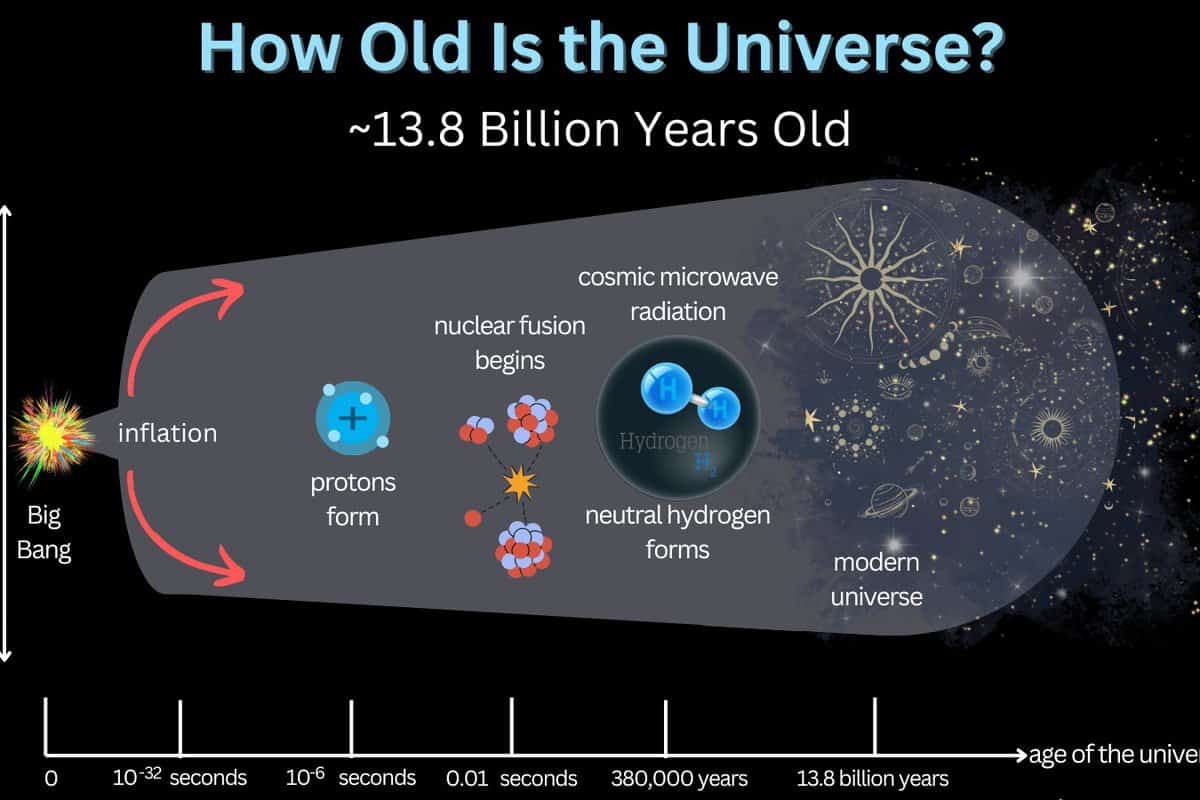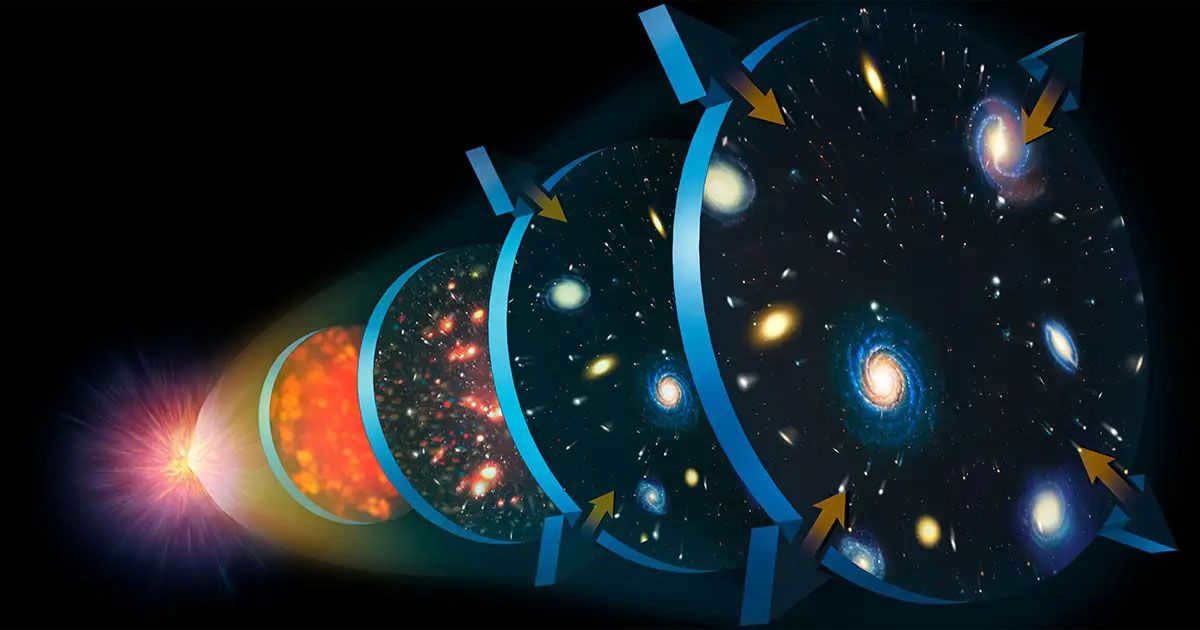
Thanks to the James Webb telescope, we now have concrete evidence to support this claim. We are now observing galaxies that are significantly older than what the standard cosmological model can account for. These galaxies appear to be more advanced and evolved than expected. However, some scientists propose that our understanding of the universe’s current age is flawed. In reality, it is much older than our previous estimations.
Since the start of the year, there has been speculation within the scientific community. However, researchers have been cautious not to jump to conclusions, fearing ridicule for challenging one of the fundamental theories surrounding our existence. Some have proposed that the initial data gathered from telescopes may be unreliable or mishandled, or that our understanding of the early development of cosmic structures is incomplete. This could mean that galaxies are forming at a much quicker rate than previously believed.
However, the laws of physics have undergone rigorous testing and verification. Distant galaxies have been found to possess an excessive amount of brightness and mass. Consequently, in July, the first research paper tackling this issue was published. The paper asserts that, based on observations, the age of the universe is in fact 26.7 billion years, rather than 13.8 billion. This conclusion is drawn from the fact that even the galaxies deemed as “very early” in the remote reaches of the Universe are at least 13.4 billion years old.
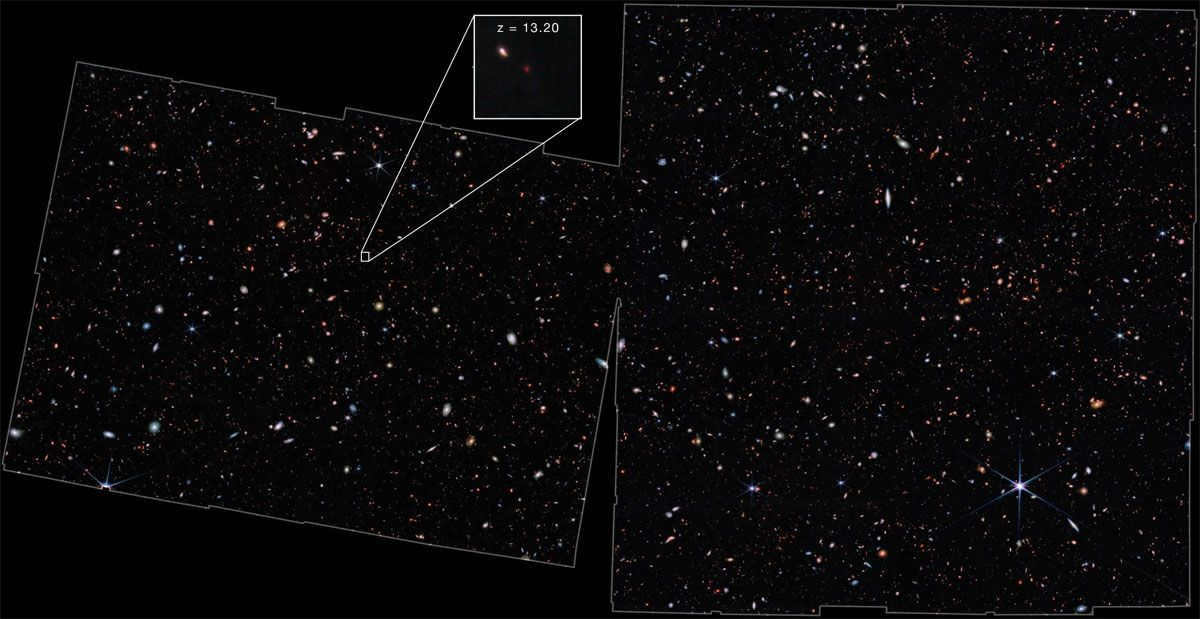
Such an enormous era of galaxies contradicts our understanding of the processes by which they are formed, such as the condensation of gas, the birth of countless stars, and their eventual collapse into black holes. In order for galaxies and black holes (which often form at their core) to reach supermassive sizes in less than a billion years after the Big Bang, the accumulation of mass onto a pre-existing black hole “seed” would need to occur at an incredibly rapid pace, surpassing the theoretical Eddington limit.
Meanwhile, the scientists claim to have developed a model involving “covariance coupling constants” (CCC) that can explain all of our observations without the need for postulating the existence of black hole “embryos” in the early Universe, altering the physics of massive star formation, or exceeding super-Eddington accretion rates. However, in order to utilize this model, we would have to significantly revise our understanding of the age of the Universe.
The CCC model is suggested to be an expansion or “modification” of the standard cosmological model (ΛCDM) – with varying cosmological constants and gradually dimmer light, enabling us to compute the duration since the Big Bang in a unique manner.

Ranjendra Gupta
Canadian scientists, led by Ranjendra Gupta, have recently published a theory challenging the current understanding of the age of the Universe. According to their research, it is possible that our previous estimates of 13 billion years are actually incorrect, and the actual age of the Universe could be nearly double that. However, this new theory has not yet been widely accepted by the scientific community, and it may take many more years before it gains recognition (if it ever does).
Now, let’s compare these two theories – the traditional understanding versus the new hypothesis. It is crucial to determine which one is more likely to be true and how we can accurately assess their validity.
Current presumptions
Since we haven’t yet ventured into the depths of space and personally observed the occurrences there, we must formulate “well-informed conjectures.” In the instance of the conventional cosmological model (ΛCDM), these presumptions are as follows:
the principles of physics, specifically the general theory of relativity (for gravity) and the standard model of elementary particle physics (for the other three fundamental forces) are applicable in the vast expanses of space, and we can depend on them;
The universe possesses a general uniformity in all directions (isotropic) and in all locations (homogeneous) when scrutinized on the grandest cosmic scales;
General relativity and particle physics have several underlying assumptions that are considered so fundamental that they are often left unmentioned. One of these assumptions is the belief that the laws of physics remain constant across both space and time, even going back billions of years. Additionally, it is assumed that the fundamental constants of nature do not change as well. Lastly, it is believed that the only impact that empty space has on light passing through it is to alter the wavelength of that light.
This change in wavelength is caused by a combination of factors, including the Doppler shift (which occurs due to the relative velocity between the light source and the observer), gravitational redshift (caused by the curvature of space-time), and cosmological redshift (due to the constant expansion of the universe). By studying the changing wavelengths of light, scientists are able to measure various cosmic phenomena, such as the distance between galaxies and their approximate sizes.
Rajendra Gupta has introduced a novel concept that preserves the majority of these assumptions, but suggests a couple of significant modifications. According to them, these changes are essential in order to provide an explanation for the inconsistencies we observe:
Firstly, we must consider the presence of other factors beyond Doppler, gravitational, and cosmological displacement. Additionally, we need to take into account the concept known as the “fatigued light” theory. This theory was initially proposed by the renowned astronomer Fritz Zwicky in 1929. According to this hypothesis, light does emit radiation and gradually loses energy as it travels, essentially becoming “tired”. Fritz Zwicky, who first postulated the existence of dark matter and discovered the gravitational lens effect and methods of neutron star formation, also suggested the occurrence of light fatigue and its potential mechanisms. However, this idea has not garnered the same level of acceptance among scientists.
SecondlyInstead of assuming that the laws of physics and their underlying fundamental constants are constant over time, Gupta presents a different perspective by citing various researchers who suggest that the fundamental constants c (the speed of light), ℏ (Planck’s constant), and G (the gravitational constant) might undergo changes over time. However, these changes occur in a unique manner – all the constants change together and simultaneously – ensuring that the combinations of these constants that govern atomic transitions and emission/absorption lines remain unaffected. This allows us to study earlier galaxies and explore the laws that governed the beginning of the universe, while still relying on the consistency of these constants.
We believed that we had a comprehensive understanding of many things. Including the processes involved in the formation and eventual disappearance of black holes, which are influenced by the peculiarities of quantum particles. Fundamental concepts like the age of the universe had been widely accepted for the past fifty years. In fact, these age estimates had become increasingly precise, ranging from 14.46 ±0.8 billion to 13.78 billion and 13.787 billion. The level of accuracy continued to improve, as if we were edging closer to the ultimate answer!
However, all of this changed when our theories collided with the realities of the universe.

Scientists find it puzzling that we can see so many galaxies with these properties when we look out into the distance. They are curious about where these galaxies came from so early in the universe’s formation. While we have a good understanding of the physical processes happening here, such as gas condensing to form these early galaxies and the formation of stars and their radiation providing feedback to prevent more gas from entering the galaxy, the abundance of these galaxies remains a mystery.
There is a limit to the rate at which material can accumulate on celestial objects (known as the Eddington limit). Based on calculations, it should take at least 500 million years for even small galaxies to form (and ideally, 1 billion years if we consider the Kennicutt-Schmidt law). Consequently, when we observe these extremely early galaxies, it appears that something is amiss. Many of them exhibit peculiar characteristics that are difficult to reconcile with this theoretical framework. For instance, they:
- possess substantial mass,
- radiate intense brightness,
- contain a significant amount of heavy elements,
- are abundant in gas,
- demonstrate vigorous star formation activity.
The discoveries made by the James Webb telescope appear to challenge our existing conventional understanding of the universe. Is it possible that such a large number of galaxies could have emerged in such a short time after the occurrence of the Big Bang? Moreover, if we are able to observe even earlier, will we uncover galaxies that are even more ancient?
Gupta and his colleagues have observed that by incorporating the concept of “tired light” into the standard ΛCDM cosmology, the universe appears to age at a much slower rate, despite exhibiting significant redshifts of light. In contrast to the expected age of 13.8 billion years in the standard ΛCDM universe, a ΛCDM universe with tired light would be approximately 6 billion years older, resulting in a total age of around 20 billion years. Interestingly, the majority of this visual aging occurs within the first billion years of the universe’s existence. Consequently, galaxies visible within the limits of the Hubble and James Webb telescopes in the ΛCDM model would be approximately 300-400 million years old, whereas in the ΛCDM model with tired light, they would be approximately 2 billion years old. This aligns well with our understanding of the rate at which galaxies form.
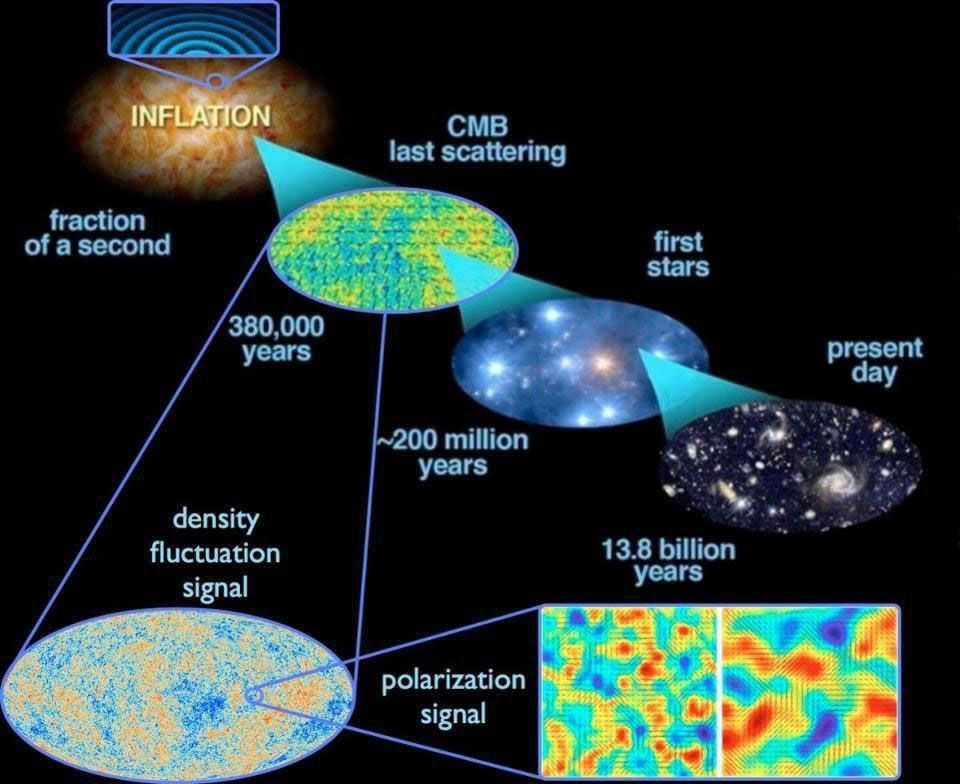
The standard model of cosmology, which is currently under scrutiny
If we incorporate covariance coupling constants (CCCs) alongside the concept of “tired light,” we can extend the estimated age of the Universe to an impressive 26.7 billion years. This can be achieved without deviating from our observations or altering the fundamental laws of physics. At a redshift of z=10, the most distant galaxies would be approximately ~6 billion years old, as opposed to the previously estimated ages of ~400 million or ~2 billion years.
Gupta proposes that despite the surprising discovery of galaxies that appear significantly more massive and luminous than anticipated by the James Webb telescope, adopting his modified cosmological model with tired light and covariance coupling constants would reconcile these findings with our expectations.
4 methods to validate the hypothesis of an “ancient universe”
Naturally, it is extremely difficult to completely alter our perspective on the cosmos and comprehension of the universe based on just a few images. Perhaps there is some missing understanding on our part, and galaxies actually form much more rapidly than previously believed. Alternatively, there may exist some other principle that enables them to materialize almost immediately following the occurrence of the Big Bang, subsequently accumulating mass at an accelerated rate. In order to substantiate Gupta’s theory, concrete evidence is required. Fortunately, such evidence may be within reach. Several crucial indicators may be observed if light experiences fatigue during its journey through space, or if the fundamental coupling constants experience simultaneous alterations as the universe progresses.
There are four critical pieces of potential evidence that could be obtained. Consequently, Gupta’s theory would gain validation if:
No. 1: Fatigued light introduces a “smudging effect” to faraway galaxies.
When Fritz Zwicky initially suggested the concept of fatigued light in 1929, it was one of those rare astronomical ideas that did not appear feasible even at the time of its proposal. Why? Even Zwicky himself recognized prior to his publication that if there was a factor in the Universe causing light to fade, it would imply that it was interacting with something. And even more remote objects, it turns out, would not only appear more red, but would consistently be less sharp: light from them would not efficiently reach us.

The image above displays two entities: a prominent entity in the foreground with a relatively small redshift, and a considerably more distant entity in the background with a larger redshift. If the concept of “tired light” played any role in the redshift of these entities, the more distant ones would always appear more blurred. However, in this particular image, as well as in other instances where objects at varying distances are depicted together, we observe a distinction in redshift but hardly any difference in blur. As we peer farther and delve deeper, the Universe does not become more “blurry”. The optical constraints of our telescopes and observatories demonstrate that roughly 100% of the observed redshift is standard cosmic redshift, leaving no room for additional theories.
As an object’s light becomes more red-shifted, it will take a longer period of time for an observer to perceive the same amount of emitted wavelengths. If an object has a redshift of z=1, its wavelength will be stretched by 100% compared to an object with a redshift of z=0 (meaning it is in the present moment). In order for the same number of wave crests and troughs to pass by us, we would need to wait twice as long. This leads to a fascinating conclusion: when we observe a distant Universe with a significant redshift, we should observe these distant objects experiencing cosmological time dilation, where their clocks and waves appear slower from our perspective.
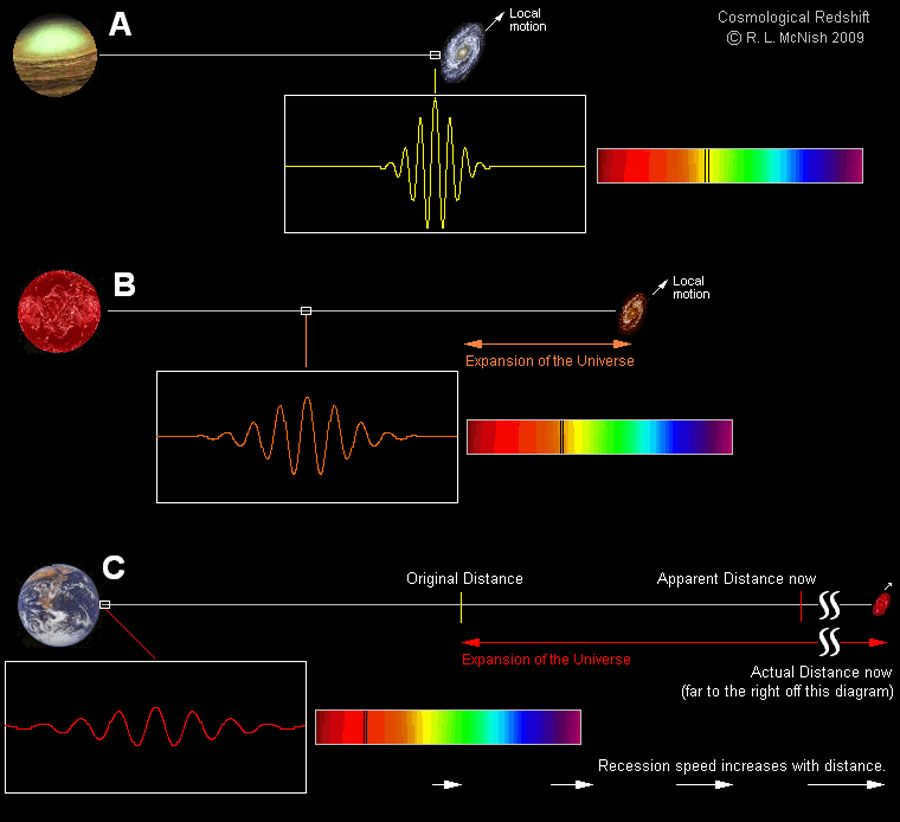
When the galaxy is farther away, the redshift observed is greater, and the time dilation observed is also greater – because the signal is stretched out over a longer period of time.
We observe this phenomenon in various celestial objects, such as distant supernovae. The greater the redshift of a supernova, the more its brightness spike curve is elongated over time. This has also recently been validated by studying quasars, which exhibit a regular periodicity. When we peer into the far reaches of the universe and witness a cosmos that was less than 1 billion years old, a 100% redshift once again appears cosmological: these quasars demonstrate time dilation precisely as predicted by our standard ΛCDM cosmology. There is no additional deceleration. There is no room for the theory of tired light. Consequently, Occam’s razor applies: there is no necessity to introduce an additional concept.
No. 3: Tired light will alter the thermal spectrum of the cosmic microwave background.
An incredibly significant indicator. While the most distant galaxies we observe exhibit a tremendous redshift of z = 13, the cosmic microwave background, which holds the world record for redshift, boasts an absolutely astronomical value of z = 1089. This light has been traveling through the cosmos since the universe was a mere 380 thousand years old (according to the ΛCDM standard). As light undergoes a redshift due to the expansion of the universe, it maintains its blackbody nature: the distribution spectrum of photons remains in thermal equilibrium. However, the density of photons must decrease in order to match that of a “cooler” blackbody. We can observe this phenomenon in ΛCDM.
However, in the case where the light were to experience fatigue rather than “tire,” a different phenomenon would occur. The energy of each individual photon comprising the cosmic microwave background would diminish, while the overall density of these photons would remain constant. Consequently, the spectral characteristics of “tired light” would not align with those of a purely black body.
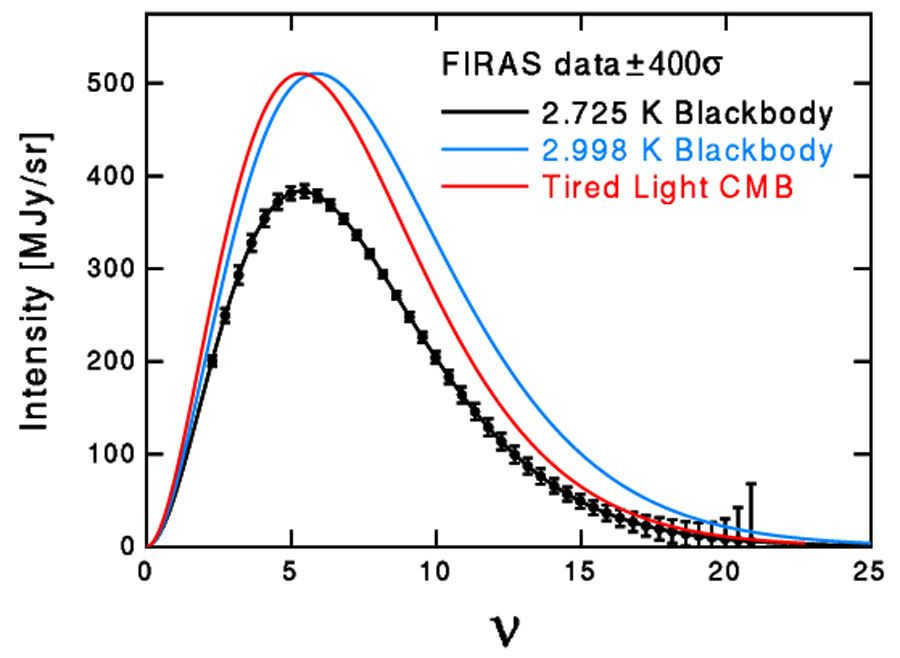
The red line represents the potential change in the emission of relic radiation at 2.998 K in the tired light scenario, where the energy is lost but the blackbody nature is not retained. It can be determined that less than 0.001% of relic radiation can be attributed to “tired light” photons.
We have the answer. As depicted in the image above (taken from NASA’s previous Cosmic Background Explorer mission), the cosmic microwave background is the most accurate blackbody ever recorded. There is no room for “tired light” in this context either. The only way to salvage this aspect of “tired light” cosmology would be to detect some non-blackbody component in the cosmic microwave background. However, no such observation has been made thus far.
No. 4: The modification of coupling constants would not only impact the remote regions of the Universe but also be detectable through laboratory experiments conducted on Earth.
In summary, there is currently no empirical evidence supporting the new hypothesis. However, it does provide a plausible explanation for the presence of recently discovered galaxies. Another proposition put forth by Gupta and his research team suggests that the coupling constants undergo changes over time. It is well-known that atomic transitions are influenced by variations in two fundamental constants, namely c (the speed of light) and ℏ (Planck’s constant), while cosmological processes are also influenced by G (the gravitational constant). According to Gupta’s theory, these constants are interconnected and could have possessed different values billions of years ago.
Thankfully, here on our planet, we have various methods to autonomously validate these constants, including monitoring their changes over time. Laboratory experiments that measure the magnetic moment of the electron, the spin-flip transition in hydrogen, and the equivalence of inertial and gravitational mass can provide reliable data. However, the most compelling evidence for the constancy of these fundamental constants throughout history comes from a unique source: the Oklo uranium deposit in Gabon. This natural nuclear reactor has been operating for nearly two billion years, offering a valuable insight into the stability of these constants.
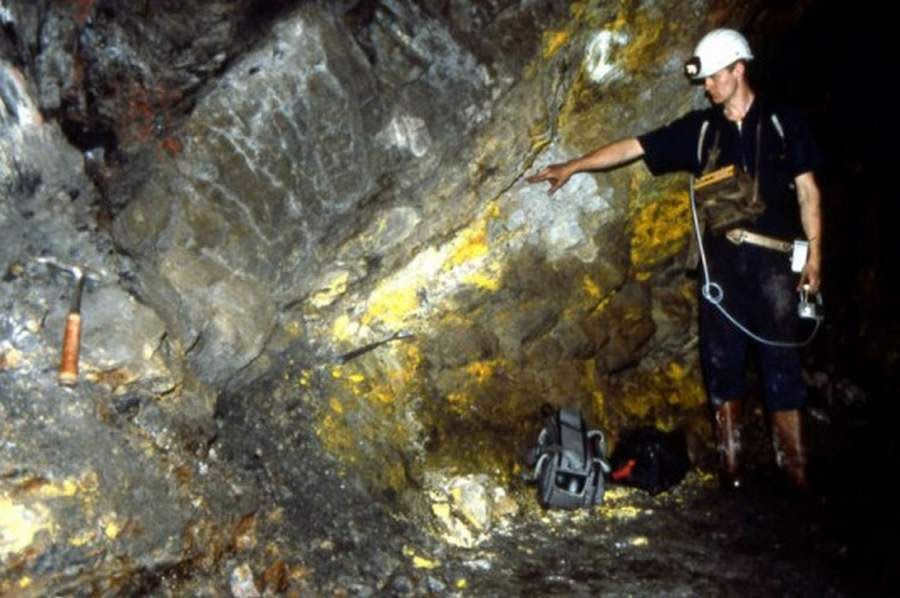
Uranium oxide is responsible for the yellow deposits.
By examining the way nuclear reactions occurred in the natural conditions of Earth 1.7 billion years ago, we can determine that the fine structure constant, which is influenced by electron charge, the speed of light, and Planck’s constant, changes by less than 0.3 parts in 10 quadrillion (10^16) per year. This change is significantly smaller than what Gupta’s theory of “changing fundamental constants” requires. Additionally, since Planck’s constant remains relatively constant, it follows that the other constants, which are interconnected, also do not change.
Based on the current data, it is evident that none of the four “old universe” proofs hold true. Instead, they support the validity of the standard ΛCDM cosmological model.
Gupta’s model can be seen as an interesting thought experiment, but it lacks substantial evidence. There is no proof of “light fatigue” or “covariation of fundamental constants” as proposed. Our observations of the universe, ranging from distant galaxies to the cosmic microwave background and even ancient nuclear reactors on Earth, all indicate that the concept of an “older cosmos” does not align with reality.
While our understanding of the universe may still be incomplete, it seems certain that its age is precisely 13.8 billion years, rather than the new hypothesis suggesting 26.7 billion years.
The explanations for the galaxies observed in James Webb’s images that appear to be “too early” in cosmic history have not yet been provided to us. This presents a significant and challenging task for astrophysicists to tackle. However, it would be premature to completely revise our entire understanding of the cosmos solely based on these observations.
P. S. There are numerous exciting job opportunities available in Russia and abroad. You can explore them through the Telegram-bot called getmatch. Simply specify your desired salary, and the best job offers will be presented to you. Additionally, our experts will assist you in securing interviews. The process is quick and easy, requiring less than 30 seconds to set up. This platform also serves as a valuable resource for staying updated on the job market.

The knowledge of the age of historical artifacts and the duration of our universe is crucial in comprehending the world around us. Scientists have developed numerous techniques to determine the age of archaeological discoveries and establish the timelines of significant historical events. Nowadays, the chronological time scale encompasses not only the dates of ancient volcanic eruptions, but also the birthing periods of the stars visible in the night sky. Today, we will provide an overview of the primary dating methods.
Discoveries from the Past
When discussing the age of archaeological discoveries, one cannot forget about the radiocarbon method. This technique, although not the only one, is widely known for dating ancient artifacts. It has gained popularity, but also faced constant criticism. So, what exactly is this method, what is its purpose, and how is it applied?
Why is the exact timing of an organism’s death significant? Carbon compounds serve as the foundation of life on our planet. Living organisms primarily obtain carbon from the atmosphere. When an organism dies, the exchange of carbon with the atmosphere ceases. However, the carbon present on Earth, despite occupying one cell of the periodic table, is diverse. There are three isotopes of carbon on our planet: two stable isotopes – 12 C and 13 C, and one radioactive isotope – 14 C, which undergoes decay. While an organism is alive, the ratio of stable to radioactive isotopes within it remains the same as in the atmosphere. Once carbon exchange stops, the quantity of the unstable isotope 14 C (radiocarbon) begins to decrease due to decay, resulting in a change in the ratio. After approximately 5700 years, the amount of radiocarbon is halved, a process known as the half-life.

The technique of radiocarbon dating was developed by Willard Libby. Initially, he made the assumption that the ratio of carbon isotopes in the atmosphere remains constant over time and space, and that the ratio in living organisms matches that of the atmosphere. With this in mind, by measuring the ratio in an archaeological sample, we can determine the time period it corresponds to in terms of the atmospheric ratio. Alternatively, if there is no radiocarbon present in the sample, we can obtain an “infinite age”.
The technique does not allow us to look far into the past. Its theoretical limit is 70,000 years (13 half-lives). Within that time frame, all the unstable carbon will have fully decayed. However, the practical limit is around 50,000-60,000 years. It is not possible to go beyond that as the precision of the equipment does not permit it. While they can determine the age of the “Ice Man,” it is no longer possible to delve into the planet’s history before the advent of humans and ascertain the age of dinosaur remains, for instance. Furthermore, the radiocarbon method faces significant criticism. The disputes surrounding the Shroud of Turin and the challenges to the accuracy of this method in determining the relic’s age serve as just one example of its imperfections. The debate over the contamination of carbon isotope samples after the cessation of carbon exchange with the atmosphere is particularly noteworthy. There is not always certainty that the object chosen for analysis has been completely cleansed of carbon introduced afterwards, such as through bacterial and microbial colonization.
It should be mentioned that following the initiation of the technique, it became apparent that the proportion of isotopes in the atmosphere has undergone alterations throughout time. Hence, researchers were required to establish a calibration scale, commonly referred to as the radiocarbon calibration curve, which tracks the yearly variations in the concentration of radiocarbon in the atmosphere. To achieve this, samples were obtained from objects with known dates. The scientists received valuable assistance from dendrochronology, a field of study centered around the examination of tree rings on an annual basis.
Fossils of prehistoric dinosaurs and ancient flora
Now let’s discuss dinosaurs. As you may be aware, the dinosaur era was a relatively brief (though still significant in terms of Earth’s geological history) span of time, spanning 186 million years. This era, known as the Mesozoic Era according to our planet’s geochronological scale, commenced approximately 252 million years ago and concluded 66 million years ago. Scientists have successfully divided this era into three distinct periods: the Triassic, Jurassic, and Cretaceous periods. And for each of these periods, they have identified specific types of dinosaurs. But how did they do it? After all, the radiocarbon dating method is not applicable to such ancient timeframes. In most cases, the age of dinosaur remains, as well as those of other ancient creatures and plants, is determined by the specific period of rock in which they are discovered. For example, if the remains of a dinosaur are found in rocks from the Upper Triassic period (which occurred 237-201 million years ago), it indicates that the dinosaur lived during this time. Now the question arises: how do scientists determine the age of these rocks?

We previously mentioned that the radiocarbon method can be utilized not only to ascertain the age of objects with a biological origin. However, due to the carbon isotope’s brief half-life, it is unsuitable for determining the age of geological rocks. This technique, although the most renowned, is just one of several radioisotope dating methods. There exist other naturally occurring isotopes with longer and more well-known half-lives. Additionally, there are minerals, like zircon, that can be utilized for age determination.
It serves as a highly convenient mineral for the purpose of age determination through uranium-lead dating. The starting point for age determination would be the moment of zircon crystallization, comparable to the moment of death in the radiocarbon method for biological objects. Zircon crystals typically possess radioactive properties due to the presence of impurities, primarily uranium isotopes. Incidentally, the radiocarbon method could also be referred to as the carbon-nitrogen method, as nitrogen is the decay product of the carbon isotope. However, scientists are unable to determine which nitrogen atoms in the sample were formed as a result of decay and which were originally present. This is why, unlike other radioisotope methods, understanding the fluctuations in radiocarbon concentration in the Earth’s atmosphere is of utmost importance.

When it comes to the uranium-lead technique, the byproduct of decay is an isotope that is noteworthy due to its absence in the sample beforehand or its original concentration being known. Researchers calculate the decay rate of two uranium isotopes, which transforms into two distinct lead isotopes upon decay. This allows them to determine the ratio of the initial isotopes’ concentration to that of the resulting daughter products. Scientists utilize radioisotope methods on solidified rocks to determine the amount of time that has passed since their formation.
Planet Earth and Other Celestial Objects
There are several other techniques that scientists use to determine the age of geological rocks, such as potassium-argon, argon-argon, and lead-lead dating. The latter method has been particularly useful in determining the formation time of the planets in our solar system, including the age of our own planet. It is believed that all the planets in our system formed around the same time. In 1953, Claire Patterson, an American geochemist, conducted a study in which he measured the ratio of lead isotopes in meteorite samples that had fallen in what is now the state of Arizona, approximately 20-40 thousand years ago. This research allowed him to refine the estimate of the Earth’s age to be approximately 4.550 billion years. Similar analyses of terrestrial rocks have also provided estimates in the same range. For example, rocks found on the shores of Hudson Bay in Canada have been determined to be approximately 4.28 billion years old. Additionally, gray gneisses (rocks with a chemical composition similar to granite and shale) found in Canada were previously considered to be the oldest rocks on Earth, with estimates ranging from 3.92 to 4.03 billion years old. This method of dating is applicable to any celestial body within our solar system. Analysis of moon rock samples brought back to Earth has revealed that they are approximately 4.47 billion years old.
Obtaining anything from distant stars is impossible except for their light. However, that light itself is incredibly valuable. It is the very essence of a star that enables us to analyze its chemical composition. Understanding the components that make up a star is crucial in determining its age. Throughout their lifespan, stars go through various stages, starting as protostars and eventually becoming white dwarfs. As a result of the thermonuclear reactions occurring within a star, the elemental composition constantly undergoes changes.
Right after being born, the star starts its journey on the main sequence. Main-sequence stars, like our Sun, are primarily composed of hydrogen and helium. As the star undergoes thermonuclear reactions, the hydrogen in its core burns out and the amount of helium increases. This hydrogen burning phase is the longest period in a star’s life, lasting approximately 90% of its total lifespan. The duration of each stage depends on the mass of the star, with larger stars shrinking and burning out at a faster rate. The star remains on the main sequence until all the hydrogen in its core is depleted. The subsequent stages, where heavier elements are burned, make up less than 10% of the star’s lifetime. Consequently, as a main-sequence star ages, its helium content increases while the amount of hydrogen decreases.
Up until a few centuries ago, it appeared that we would never have the ability to comprehend the makeup of stars. However, the discovery of spectral analysis in the mid-19th century provided scientists with a powerful tool for examining distant objects. However, it was actually Sir Isaac Newton in the early 18th century who first used a prism to break down white light into distinct components of various colors – known as the solar spectrum. One hundred years later, in 1802, British scientist William Wollaston closely examined the solar spectrum and identified narrow dark lines within it. Initially, he did not give them much thought. However, it was soon after that German physicist and optician Josef Fraunhofer investigated and meticulously described these lines. He also attributed them to the absorption of rays by gases in the Sun’s atmosphere. In addition to studying the solar spectrum, he also examined the spectra of Venus and Sirius and discovered similar lines. These lines were also found in artificial light sources. It was not until 1859 that German chemists Gustav Kirchhoff and Robert Bunsen conducted a series of experiments that led to the conclusion that each chemical element corresponds to its own line in the spectrum. Therefore, by analyzing the spectrum of celestial luminaries, we can draw conclusions about their composition.

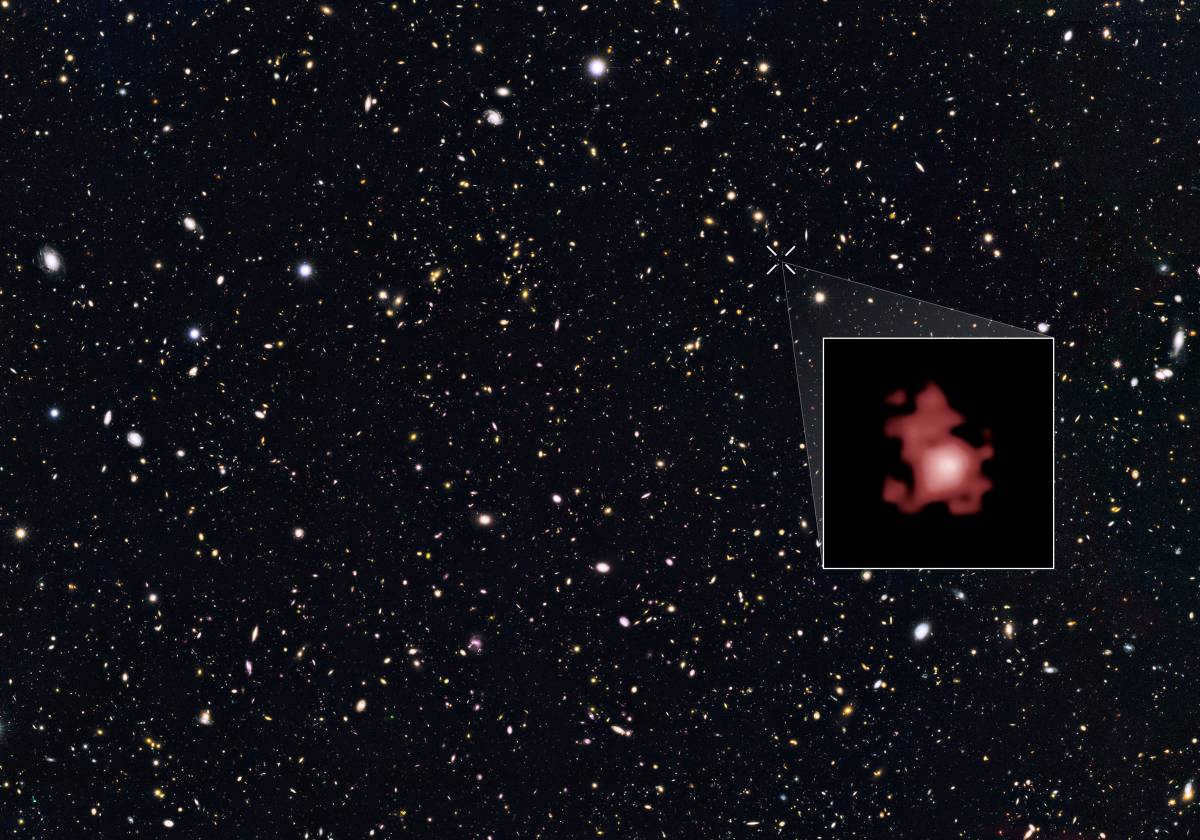
The galaxy is labeled as 11, indicating that it has a redshift value of 11.1. A higher redshift value suggests that the object is further away from us, as the light from it has traveled for a longer period of time, making the object older. The current record holder for age is the galaxy Egsy8p7, which has a redshift of 8.68, equivalent to being 13.1 billion light-years away. The galaxy UDFj-39546284 is a potential contender for the title, with a redshift value of approximately 11.9, although this is still awaiting full confirmation. These objects set a minimum age for the Universe, as it cannot be younger than them.
Earlier, we discussed the phenomenon of star spectra, which are utilized to determine the chemical composition of stars. When observing the spectrum of a star or galaxy that is moving away from us, there is a noticeable shift of the spectral lines towards the red (long-wavelength) side. The further an object is from us, the more pronounced this red shift becomes. Conversely, when an object is approaching, there is a shift of the lines towards the violet (short-wavelength) side, known as the blue or violet shift. One explanation for this phenomenon is the well-known Doppler effect, which also accounts for the change in pitch of a passing car’s siren or the sound of an airplane’s engine. The Doppler effect forms the foundation for the functioning of most traffic cameras.
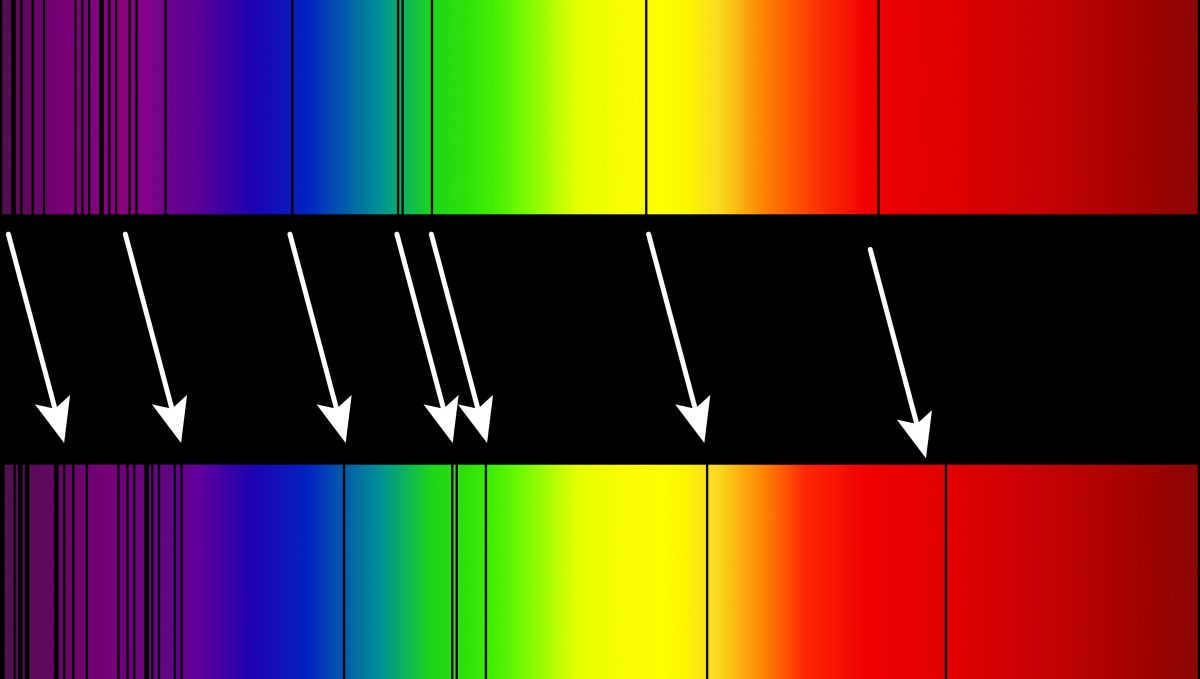
Thus, it is common knowledge that the cosmos is undergoing expansion. By discerning the pace at which this expansion is transpiring, we can ascertain the age of the universe. The unchanging factor that showcases the speed at which two galaxies, positioned one megaparsec apart, are moving away from each other is referred to as the Hubble constant. However, in order to calculate the age of the Universe, it was imperative for scientists to acquire knowledge of its density and composition. To accomplish this, two space observatories, namely WMAP (NASA) and Planck (European Space Agency), were launched into space. The data gathered by WMAP enabled scientists to determine that the Universe is approximately 13.75 billion years old. Subsequently, the European satellite, deployed eight years later, collected data that allowed for the refinement of crucial parameters, ultimately leading to the conclusion that the age of the universe is 13.81 billion years.
As per a recent study conducted by a physicist from Canada, it is suggested that the age of the universe could potentially be as ancient as 26.7 billion years. This theory poses a challenge to the prevailing cosmological framework and presents a considerable challenge in terms of verification. Nevertheless, if proven true, it could potentially provide insights into some of the perplexing queries regarding the early stages of the universe.
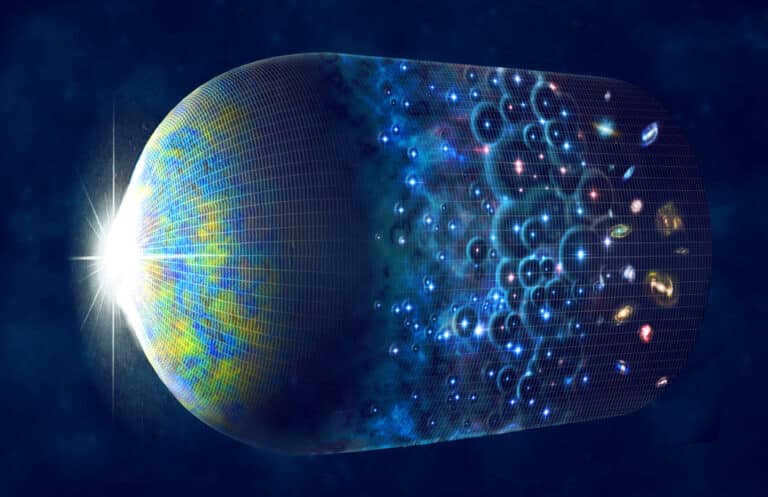
According to the prevailing theory, the age of the Universe is estimated to be approximately 13.8 billion years, starting from the event known as the Big Bang to the present day. This estimation is based on research conducted by astrophysicists who have measured the time elapsed since the Big Bang and studied the oldest stars through analyzing the redshift of light emitted by galaxies located at great distances. The method used involves observing Type Ia supernovae, which can be reliably identified by their spectrum. Although these supernovae have similar flash energies, their observed brightness varies due to their different distances from Earth. By comparing the brightness of these supernovae, often referred to as the “standard candles of cosmology,” scientists can determine the distances of the galaxies in which they occur.
Astronomers subsequently made a groundbreaking discovery that objects categorized as distant using this technique exhibit a strikingly reddish hue in comparison to similar objects categorized as close (known as cosmological redshift). In an attempt to elucidate this peculiar phenomenon, they initially proposed the “tired light” model, which posits that photons gradually lose energy as they travel vast distances, thereby becoming more “red” in appearance (i.e., exhibiting longer wavelengths). However, this explanation proved inadequate for several reasons, such as the observation that supernovae flares in far-flung regions of the Universe seemingly endure for a longer duration, according to astronomers’ assessments, than those in closer proximity.
Challenges with age
However, over the past decade, there has been a growing accumulation of data that does not align well with the classical model of the universe’s development. Some extremely old stars, like Methuselah (HD 140283) and others, are believed to have formed 13.5 billion years ago. This poses a problem because it was previously thought that there must have been hundreds of millions of years between the Big Bang and the formation of the first stars. Additionally, scientists have observed galaxies from the early universe that are in an advanced stage of cosmic evolution. These galaxies, visible to us as they were just a few hundred million years after the Big Bang, contain stars that are relatively rich in heavy elements. This indicates that it takes a significant amount of time for these stars to evolve and form.
The ancient galaxies observed by the James Webb Space Telescope are exceptionally massive compared to their contemporaries. The origins of these galaxies in a universe that is still shrouded in mystery have puzzled scientists for years.
Addressing this enigma, Professor Rajendra Gupta from the University of Ottawa in Canada has proposed a novel solution that combines the “tired light” hypothesis with an explanation of redshift based on the expansion of the universe within the framework of relativity theory. This groundbreaking research has been published in the prestigious journal Monthly Notices of the Royal Astronomical Society.
According to the astrophysicist, the tired light model suggests that the fundamental physical constants that govern particle interactions can vary over time, which has implications for the cosmological redshift and the age of the Universe.
The current understanding of the Universe is based on the assumption that the first generation of stars would have been significantly different from the stars we see today. These early stars would have been much more massive and composed of fewer heavy elements.
If the constants were to change in this manner, it could potentially lengthen the timescale for the emergence of early galaxies that are observed at high redshifts, from a few hundred million years to several billion years. This would provide a greater window of time for galaxies to undergo evolution and for ancient stars to manifest in the early Universe. Eventually, Gupta proposed that the likely age of the cosmos is 26.7 billion years, approximately twice the present estimations.
Gupta’s approach aims to address the inconsistencies between the relatively young age of the universe (13.8 billion years) according to the theory of relativity, and the discovery of highly evolved galaxies by astronomers in recent years. For instance, the galaxy HD1, which is 13.463 billion years old, formed a mere 324 million years after the Big Bang. Despite its age, it remains remarkably luminous, comparable to many contemporary galaxies. The prevailing cosmological model fails to explain how enough stars could have formed in such a brief period to create such a bright galaxy. Given this context, it is understandable that Gupta turned to the tired light hypothesis of the late 1920s.
One drawback of Gupta’s method is its high level of complexity, making it challenging, if not impossible, to conduct tests. Assuming that the physical constants in the early universe were in flux, nearly any observation can be accounted for. However, the described changes cannot be verified due to the lack of available experiments in the early universe. As a result, Gupta’s hypothesis is only weakly testable and borders on being non-scientific.
Different perspectives
There are alternative explanations for the presence of highly developed galaxies in the early stages of the Universe that do not rely on exotic theories like “tired light” or the fluctuation of physical constants over time. Advocates of this standpoint propose that our Universe operates cyclically, experiencing periods of contraction followed by expansion.
In this scenario, there exists a significant population of “relic” black holes that serve as the “seeds” for the rapid creation of galaxies and the subsequent rapid initiation of star formation in them, as the Universe transitions from one cycle to another. The most comprehensive explanation of this series is presented in physicist Nikolai Gorkavoy’s book “Oscillating Universe,” which was published in 2023. Within this framework, the age of the Universe also exceeds 13.8 billion years (which is only the time that has passed since the last Big Bang), but not just twice, but rather an immense number of times.
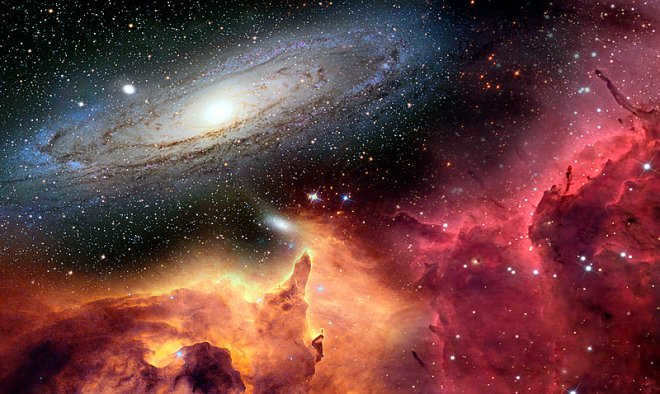
How old is our Universe? This inquiry has perplexed numerous generations of astronomers and will continue to baffle them for years to come until the enigma of the cosmos is unraveled.
As it is well-known, as early as 1929, cosmologists from North America determined that the Universe is expanding in size. Or to phrase it in astronomical language, it undergoes a continual expansion. The individual responsible for the metric expansion of the Universe is American astronomer Edwin Hubble, who derived a constant value that represents the consistent growth of space.
What is the age of the universe? For many years, scientists believed that the universe was approximately 13.8 billion years old. This estimation was based on a cosmological model that relied on the Hubble constant. However, in recent years, the European Space Agency (ESA) and the Planck telescope have provided a more precise calculation of the universe’s age, challenging the previous belief.
Exploring the cosmos with the Planck telescope
The Planck telescope was activated in May 2009 with the primary goal of accurately determining the age of our Universe. Its main function was to conduct an extensive survey of space, capturing a comprehensive snapshot of the radiation emitted by various celestial bodies resulting from the widely accepted theory of the Big Bang.

Planck Telescope
The extensive scanning procedure took place in two stages. In 2010, initial findings were acquired, and by 2013, the conclusive outcome of the outer space investigation was consolidated, yielding numerous captivating outcomes.
The culmination of the ESA research endeavor
ESA scientists have recently published fascinating findings utilizing data gathered by the “Planck” telescope’s “eye” that have allowed them to refine the Hubble constant. The expansion rate of the universe has been determined to be 67.15 kilometers per second per parsec. To put it into perspective, a parsec represents the cosmic distance that can be traversed in 3.2616 of our light years. To better grasp this concept, we can envision two galaxies repelling each other at a velocity of approximately 67 kilometers per second. Although these figures may seem minuscule on a cosmic scale, they represent an established reality.
Thanks to the comprehensive data collected by the “Planck” telescope, scientists have also been able to ascertain the age of the universe, which is estimated to be 13.798 billion years.
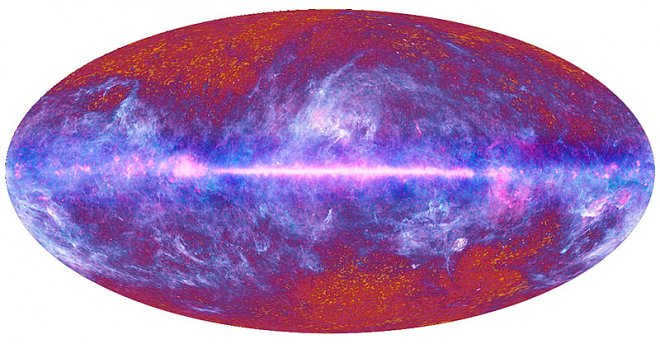
The image has been acquired from the data collected by the Planck telescope.
The research conducted by ESA has resulted in a better understanding of the mass distribution in the Universe. It has been found that “ordinary” physical matter accounts for 4.9% of the total mass, while dark matter makes up 26.8%.
Furthermore, the Planck telescope has detected and confirmed the presence of a cold spot in the remote cosmic space. This cold spot exhibits an extremely low temperature, and its origins remain unexplained by current scientific knowledge.
In addition to cosmological methods, there are other ways to determine the age of the universe, such as examining the age of chemical elements. The process of radioactive decay can provide valuable insights.
Another method involves estimating the age of stars. By analyzing the brightness of the oldest stars, specifically white dwarfs, a team of researchers in 1996 arrived at a conclusion: the age of the universe must be at least 11.5 billion years. This finding further supports the data obtained from the updated Hubble constant regarding the age of the universe.

Did the post appeal to you? Do you have any thoughts to share? Come and join us:

The age of the universe has been determined to be 13.79 billion years ± 21 million years, thanks to data collected by the 6-meter Atacama Cosmology Telescope. This finding aligns with estimates made using measurements of relic radiation by ESA’s Planck satellite and challenges the conclusions of a research team that claimed the universe is hundreds of millions of years younger.
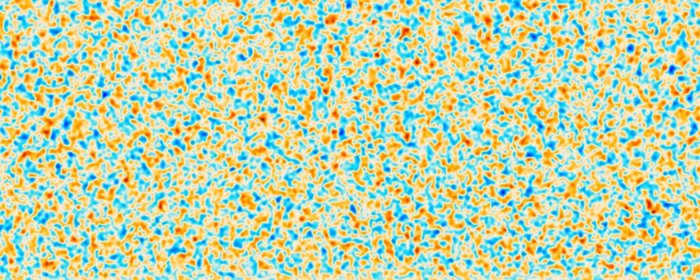
A fresh map has been generated using data from the Atacama Cosmology Telescope, showcasing the oldest light in existence. This map spans a vast region of space, measuring a staggering 20 billion light-years. Of particular interest is the polarization of the light emitted a mere 380,000 years after the Big Bang, which is depicted here in either red or blue. By analyzing the spacing between these polarized variations, astrophysicists have been able to calculate a revised estimate for the age of the Universe. Credit: ACT Collaboration
Situated in the Atacama Desert in northern Chile, the Atacama Cosmology Telescope is equipped with an incredibly sensitive camera designed to capture polarized light. Operating at wavelengths of just a few millimeters, this telescope’s primary focus is the thermal glow that remains from the plasma that once filled the early universe.
“The luminance of the atmosphere informs us regarding the composition of the primordial cosmos. The polarization pertains to movement. Collectively, the information provides an incredibly intricate depiction. Our investigations are ongoing. The subsequent major objective is to uncover minuscule disparities in parity within the polarization arrangement. If we perceive it, it serves as an indication of the gravitational radiation produced in the nascent stages of the Universe’s formation. Numerous initiatives, not solely our own, are actively searching for this signal,” the observations conclude.

14.9K posts 45.3K subscribers
Community guidelines
What guidelines can we have here, other than the guidelines set by the peekaboo itself 🙂
Wow, I mistook the picture for a test from the military recruitment center and began searching for numbers.

Alright! Can someone please clarify this for me? Does the universe have a limit? What lies beyond the boundary of the universe?
Alright. Nevertheless, it’s challenging for me to comprehend figures of that magnitude, considering the limited duration of a human lifespan. I would even go so far as to say the fleeting nature of human existence.
One of the largest hydrocracking reactors in the world requires 500 wheels to be moved.
Hydrocracking is the process of catalytically converting high-boiling oil fractions and residual products of oil distillation (such as fuel oil and tar sands) into gasoline, jet fuel, low-sulfur diesel, and other fuels, using hydrogen pressure (5-10 MPa) at temperatures ranging from 260-450 ° C. 🤓
The most alluring properties in the solar system
We are all familiar with the fact that the Soviet Union was the first to launch an artificial satellite in 1957. Since then, numerous space agencies, private companies, and research institutes have been establishing a presence in the solar system. Over the years, they have managed to conquer various frontiers in this vast expanse. While it may seem like there is ample space for everyone, certain pieces of local “real estate” are undeniably more enticing than others. One such example is the Lagrange points, which capture the attention of all interested parties. These points, named after the 18th-century mathematician who discovered them, hold immense value as unique havens of stability in our tumultuous and ever-evolving corner of the universe.
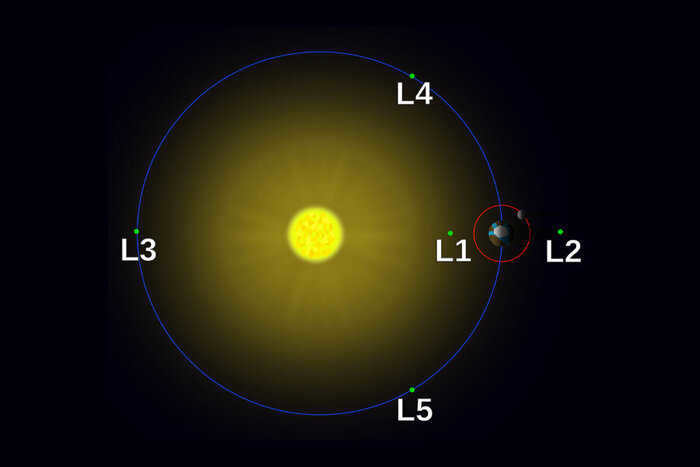
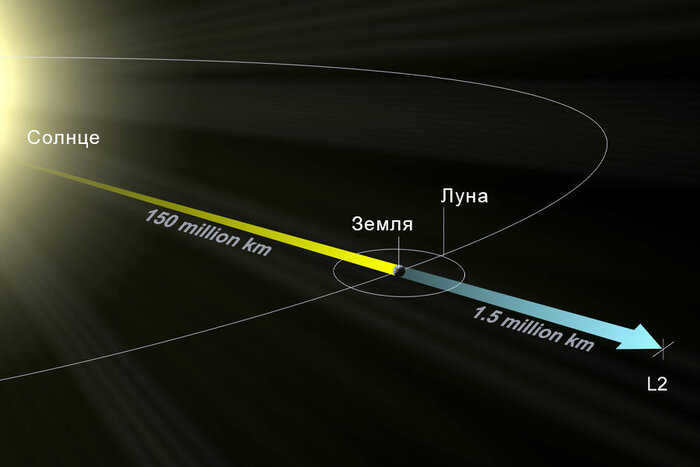
However, our system does not have many conventional “parking lots.” The interaction of massive bodies creates five Lagrangian points for each pair of participants. For instance, the Sun has five points of contact with any of the planets, and each planet has the same number of “contacts” with its satellites. When you tally it all up, there are over 1000 Lagrangian points in our system. However, only a few of them are practical for human space exploration. Many of these points are difficult to reach and, as we will discover later on, not very stable. Currently, only two of these locations are actively utilized, but this may change in the future.
The issue of what can be placed in a specific Lagrangian point is quite fascinating. Let’s focus on the ones formed by the gravitational interaction between the Sun and the Earth. L1 resides approximately 1.5 million kilometers away from our planet, nestled between these two celestial entities. Thanks to its unobstructed view of the star, it serves as an optimal spot for observing the Sun.
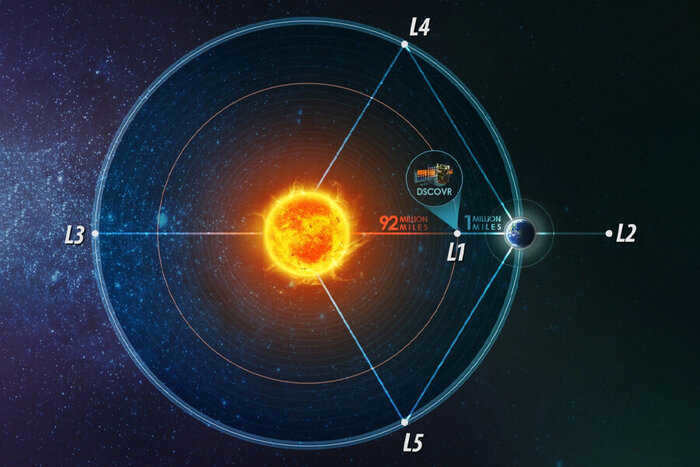
The Deep Space Climate Observatory is an American spacecraft located at Lagrangian point 1, which is used to observe the Sun and Earth.
L2, which is situated on the opposite side of the Earth and at an equal distance, offers a safe shield from sunlight and presents exceptional possibilities for space observation. In 2022, the James Webb telescope, eagerly anticipated by astronomers for two decades, commenced its operations in this location.
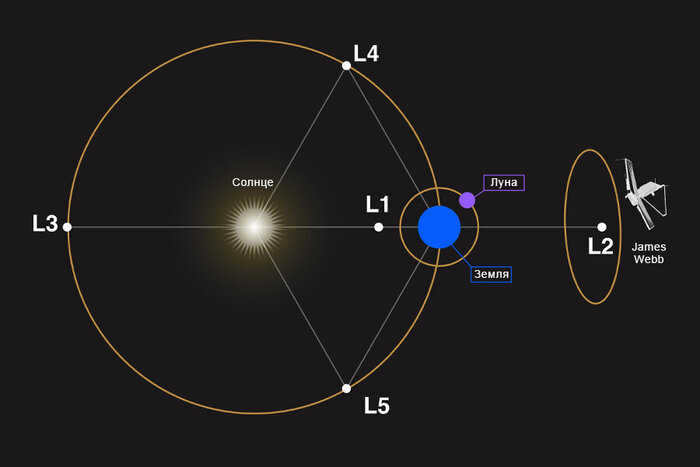
L3 is located in the most enigmatic region, diametrically opposite to the Sun’s position in Earth’s orbit. It possesses the unique characteristic of being completely invisible from any planetary surface, making it a popular subject of speculation among science fiction authors. However, from a scientific standpoint, L3 holds little significance.
L4 and L5 exhibit some variations compared to the previous Lagrangian points. The key distinction lies in the fact that the first three points in each set of Lagrangian points display a slight instability, causing the objects within them to gradually shift sideways. While it is possible to maintain their position with some effort, it still necessitates additional measures. In certain pairs of celestial bodies, the stability of L4 and L5 may not be particularly high, especially if their masses differ by less than a factor of 25. However, within the Sun-Earth system, where the star is significantly more massive than the planet, these points demonstrate remarkable stability. Furthermore, they appear to attract a variety of objects, with the Sun-Jupiter system’s L4 and L5 points being particularly noteworthy as they have accumulated thousands of asteroids.
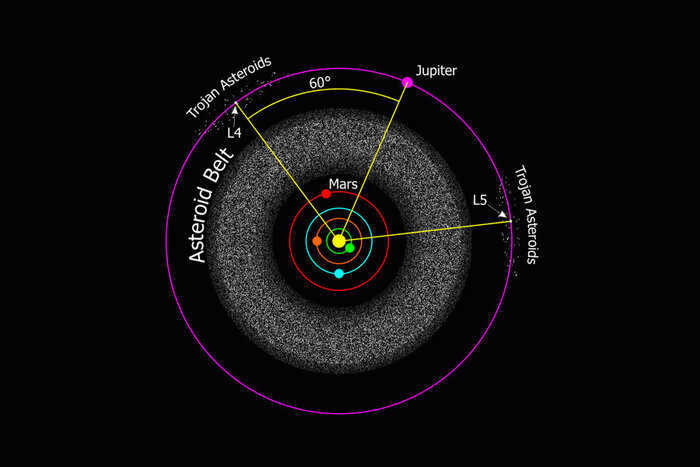
Each Lagrangian point within the solar system possesses unique characteristics. Some of these points could potentially serve as sources of building materials, akin to drifting asteroids. Others could be utilized as refueling stations to replenish spacecraft fuel for deep space travel. It is even conceivable that human colonies could be established in these points, as if they were “suspended” in space. However, such possibilities remain speculative and may only come to fruition in the distant future, assuming humanity is able to overcome the challenges it currently faces on Earth. Nonetheless, it is still enjoyable to indulge in these dreams, isn’t it?
Thank you for taking the time to read this article! If you found it interesting, please show your support by giving it a “thumbs up” or subscribing to this channel. We would also like to take this opportunity to mention that we have our own Telegram channel where we regularly share fascinating posts about space and astronomy.

